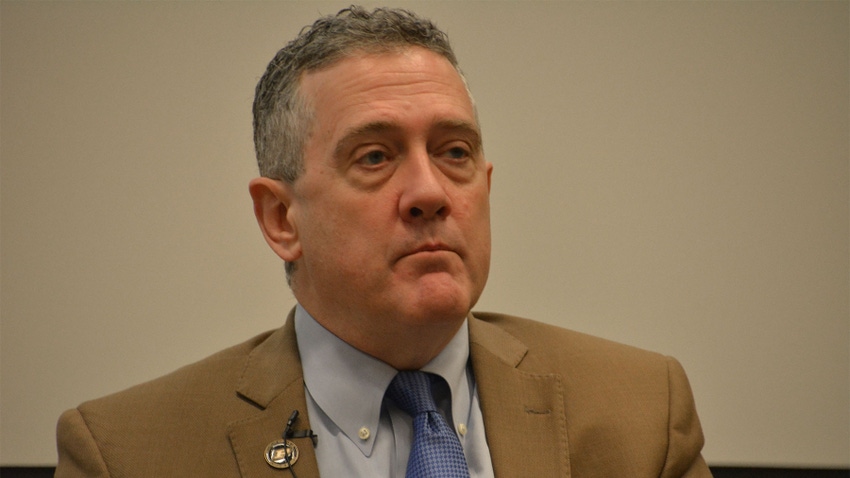
On one hand, economic indicators point in a positive direction with low unemployment. Popular restaurants are full even on weekdays. Yet consumer debt is extremely high by historic standards, and prices for gas and food are still high historically. There seems to be a disconnect between Wall Street and Main Street, and even some people on Main Street seem confused. Are good times here, or is disaster around the corner?
Jim Bullard, new dean of the Mitch Daniels School of Business at Purdue University, attempted to make sense of it all at the Top Farmer Conference sponsored by the Purdue Center for Commercial Agriculture. Before coming to Purdue, Bullard was president of the St. Louis Federal Reserve Bank, one of 12 in the country, and a former member of the Federal Reserve Open Market Committee, which sets interest rates.
Bullard answered key questions from the audience:
Interest rates have come down from over 8% last year, but we still have very low unemployment. How could that happen? Insiders refer to it as “immaculate disinflation.” Many economists thought it would take a huge recession like the 1980s to bring inflation down. Then, interest rates went super high and unemployment was over 10%. Agriculture took a big hit, too. None of that has happened, yet inflation backed way off. I believe a primary reason relates to the Fed becoming aggressive at raising interest rates, beginning in ’22.
Has inflation cooled off enough to please the Feds who set interest rates? They would like to see it at 2%. Currently, it is about 3.2%. I am sure they are still watching it closely. No stone goes unturned as the committee evaluates the economy.
The other reality for consumers is that prices aren’t going back to where they were before — they’re just not increasing as fast.
Farmers depend on banks. Should defaults of the Silicon Valley Bank and other banks last year concern us? That was a very quirky situation. A huge percentage of investors were from Silicon Valley. Many invested in startup companies. About 95% of deposits were uninsured. In typical Midwestern banks, 90% of deposits are insured — the complete opposite. It would be very unlikely to see that happen here.
The U.S. government has $33 trillion in debt. Is so much debt troubling? Too much debt can be worrisome. However, keep things in perspective. Before 2007 and the crash in 2008, the percent of the federal budget allocated to debt service was about 3%. From 2007 until recently, it was around 1%. Now, it’s back to about 2%. Expect a political crisis with proposed cuts on spending and tax increases if it gets to levels like 4%, 5% or 6%.
Plus, the global demand for U.S. treasury bonds is flat-out huge. That’s because there is very large demand for safe assets worldwide, and even today, the U.S. is viewed as the country issuing a safe asset.
Where do you see interest rates in January ’25? I don’t have a crystal ball, but my best guess would be that the prime rate could move 100 points or 1% lower than it is now, from 8.5% to 7.5%.
About the Author(s)
You May Also Like




